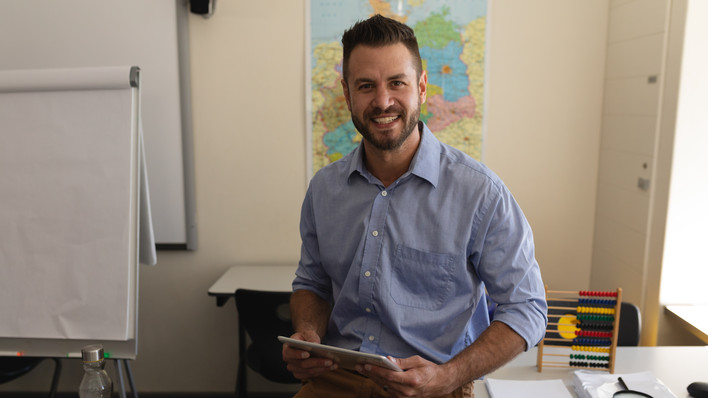The University of Maryland, Baltimore County periodically reaches out to students who left the school without completing their degrees, usually enticing a dozen or so to come back. But the coronavirus pandemic presented the university with a new opportunity.
“It occurred to us that the population that might actually appreciate and benefit from where we are right now, with 90% of our courses being online, is this population of near completers,” said Yvette Mozie-Ross, the university’s vice provost for enrollment management and planning.
This population historically struggled to make in-person classes work with their family and work obligations, Mozie-Ross said. But through a campaign this summer called the Finish Line initiative, 123 ex-students who had at least 60 credits reenrolled this fall.
The initiative’s success bucks a worrying trend. Enrollment of learners who had previously stopped-out fell 15.6% this fall, helping drive overall undergraduate declines, according to preliminary figures from the National Student Clearinghouse Research Center.
Higher education experts point to multiple reasons for these declines. Stopped-out students are struggling with the same financial and employment challenges that others are grappling with during the health crisis. Additionally, many of them are also parents and are prioritizing their children’s needs over their education.
The pandemic highlights the work it takes to reenroll these students — even those who have nearly enough credits to graduate, higher education experts said.
“If they’re that close to finishing, and they didn’t finish, there are a lot of other things happening in their lives that prevented them,” said Eric Fotheringham, director of strategic academic initiatives at the University of North Carolina System.
Offering flexible modalities
With the number of traditional-aged students expected to decline in the coming years, many institutions are newly focused on serving the roughly 36 million U.S. adults with college credits but no degree. Online learning is helping some colleges and organizations make inroads with this population despite the pandemic.
Virtual courses can be a powerful lure for stopped-out students, who are often balancing work and family obligations. The benefits for schools can also be massive; UMBC brought in roughly $385,000 in tuition revenue through its campaign.
That’s why the university is exploring permanently offering some course sections online that stopped-out students typically need to complete their degrees, such as math and foreign language classes. “This can be a low-hanging fruit,” Mozie-Ross said.
The University of Louisiana System took a similar tack by launching a program last year designed for the stopped-out students in the state. Roughly 441,000 people in Louisiana had some college but no degree as of 2018, according to a report last year from the Clearinghouse Research Center.
Through Compete LA, these students are paired with coaches who evaluate their credits and help them virtually to reenroll in one of the state’s nine participating universities.
“We have designed this knowing that because we are dealing with a population that’s statewide, the bulk of our communications were always going to be private, electronic or virtual with the students,” said Katie Barras, assistant vice president for academic innovation at the University of Louisiana System. “Ironically, we set that before COVID.”
Compete LA also worked with the colleges to prioritize programs that lead to high-demand jobs and could be offered hybrid or online, Barras said. Qualifying students pay a flat rate of $275 per credit, which is 45% lower than the average price across the participating institutions, officials said.
The pandemic hasn’t stalled interest in the program. Roughly 430 stopped-out students were taking classes through the initiative as of mid-November. “We’ve seen more students coming back because of the urgency of their need to upskill,” Barras said. “I don’t know if we would have that same volume absent COVID.”
“If they’re that close to finishing, and they didn’t finish, there are a lot of other things happening in their lives that prevented them.” Eric Fotheringham, Director of Strategic Initiatives, University of North Carolina System
Online offerings aren’t the only way colleges are appealing to stopped-out students.
Students enrolled in the University of Louisville’s organizational and leadership learning bachelor’s degree can earn up to 48 credits through prior learning assessments, which award credit based on work experience. Bachelor’s degrees typically require at least 120 credits.
“It’s a huge, huge selling point for individuals to come back,” said Matt Bergman, an education professor at the Kentucky university and a co-author of “Unfinished Business: Compelling Stories of Adult Persistence.”
The program, which targets prospective students with at least five years of professional experience, has grown from 120 students in 2007 to more than 500 this fall. Enrollment has mostly held steady through the pandemic, though Bergman noted that a couple of students had to pause their studies.
Bergman contends PLA can also bring in more tuition revenue. PLA students tend to earn more credits through traditional course-taking than their peers because they are more likely to complete a credential, according to a recent analysis from the Council for Adult and Experiential Learning and the Western Interstate Commission for Higher Education.
Making a plan
Other universities have also continued to make progress enrolling these learners and helping them complete their credentials.
ReUp Education helps higher education systems and colleges reenroll and coach stopped-out students in exchange for a portion of their tuition revenue. The company has seen re-enrollments hold steady through the pandemic and persistence rates improve recently for students who had already enrolled, said ReUp CEO, Sarah Horn.
Horn chalks up the re-enrollment trend to ReUp’s sometimes-monthslong work with students to plan their return to college.
Colleges can take several steps to ease the planning process. For one, school advisers can tell students which of their credits will transfer before they enroll and estimate how long it will take to complete their credential.
Planning for returning students’ college expenses is also key.
The Graduate Network, a nonprofit devoted to reenrolling and coaching stopped-out students, helps them craft a financial plan for their return. Other organizations and schools offer emergency grants or scholarships to aid students with unexpected expenses that could derail their education. And Compete LA offers a flat tuition rate so students know what to expect.
“These adult learners are juggling mortgages, kids, other financial obligations,” Compete LA’s Barras said. “They need to be able to plan for what it’s going to cost them to finish.”
“These adult learners are juggling mortgages, kids, other financial obligations. They need to be able to plan for what it’s going to cost them to finish.” Katie Barras, Assistant Vice President for Academic Innovation, University of Louisiana System
Some students, however, will need to scale back their education during the pandemic as they focus on other priorities. Colleges should work with them to figure out whether taking fewer courses will affect their financial aid and craft a plan to ramp up their coursework once the health crisis subsides, said Dave Jarrat, senior vice president of strategic engagement and growth at InsideTrack, which partners with colleges to coach stopped-out students.
Still, others will need to pause their education or delay their return to college, and institutions should ensure those students have a clear pathway back. Schools can message those students even while they aren’t taking courses to foster feelings of community.
Creating easy entry points could also help, said Amanda Winters, a program director for the National Governors Association’s Center for Best Practices.
Compete LA recently partnered with StraighterLine, a company offering online courses that can transfer to select colleges, to create a virtual academy allowing students to take classes for $150 a month. Louisiana’s public university system bills the move as another pathway back into college.
Stackable credentials could also ease stopped-out students back into a full degree. Dixie State University, in Utah, discounted certain courses to $20 a credit for students who lost their jobs or are underemployed because of the pandemic. Although the offer is for classes in short-term programs, students can combine them into full degrees.
Similarly, the University of Louisville launched a 12-credit certificate in human resources leadership this year that can be applied to the organizational leadership and learning bachelor’s program, which targets stopped-out students.
Short-term programs that stack together give students “wins the whole way through.” U of Louisville’s Bergman said.
This article was written by Natalie Schwartz from Education Dive and was legally licensed through the Industry Dive publisher network. Please direct all licensing questions to legal@industrydive.com.
![]()



